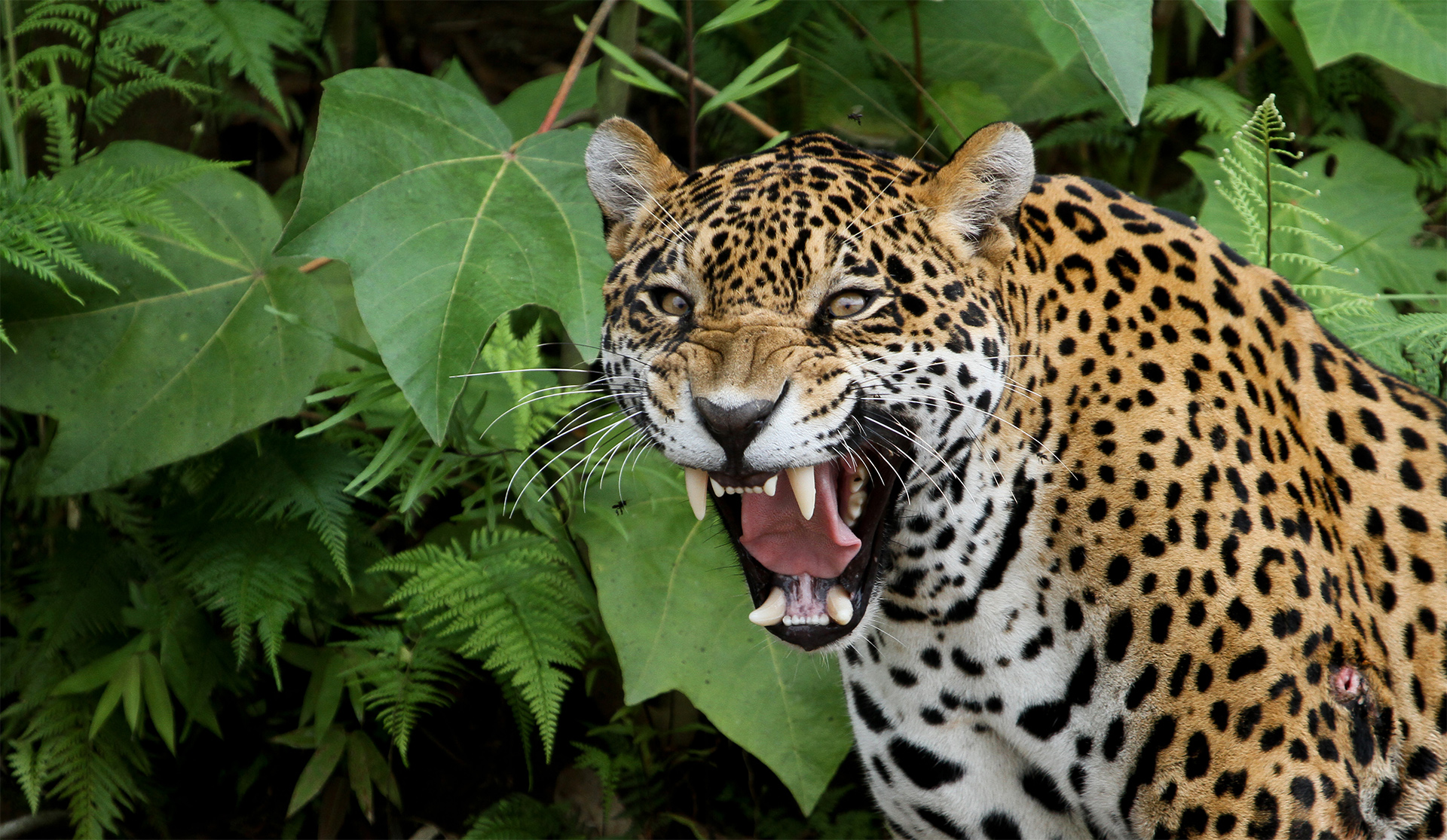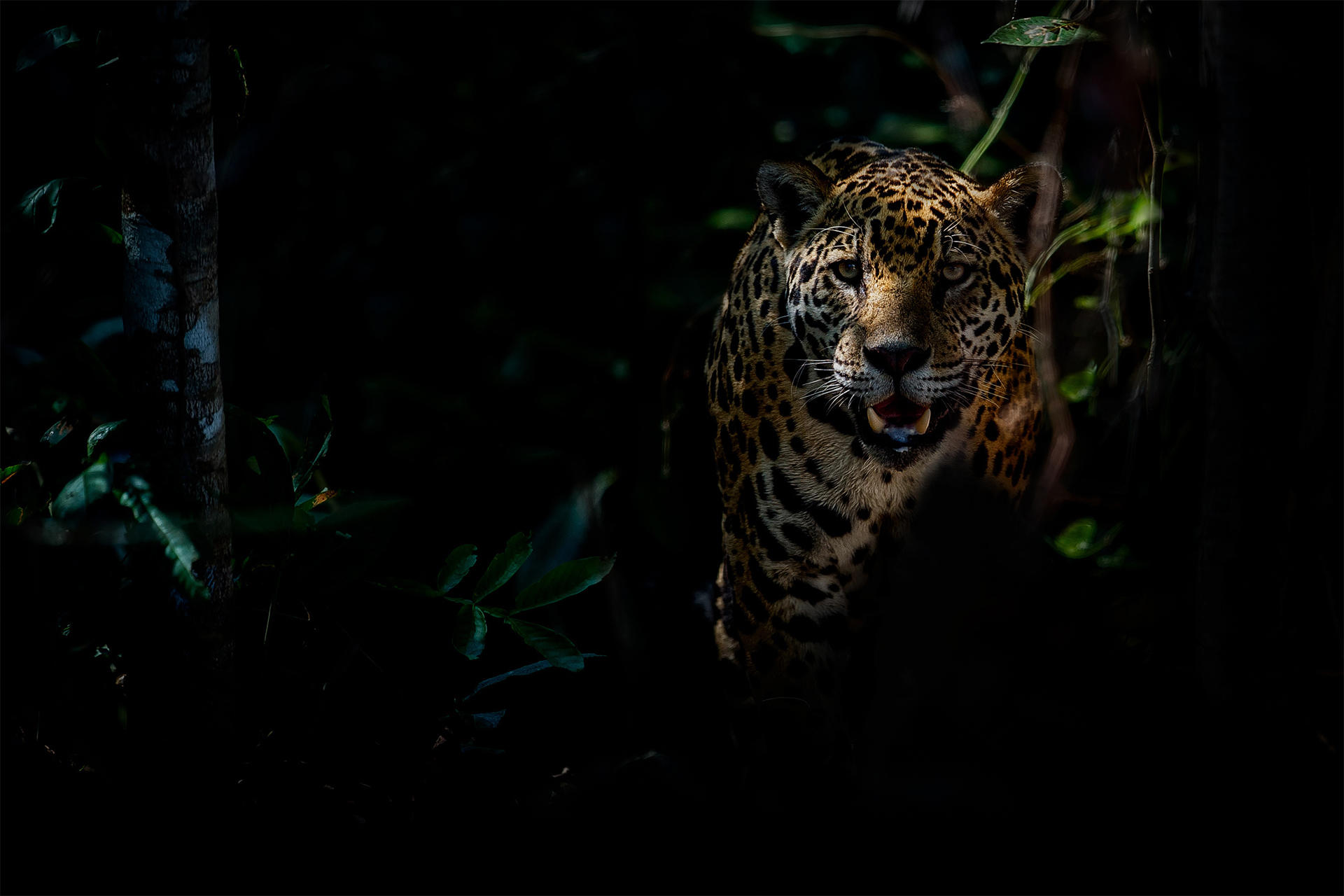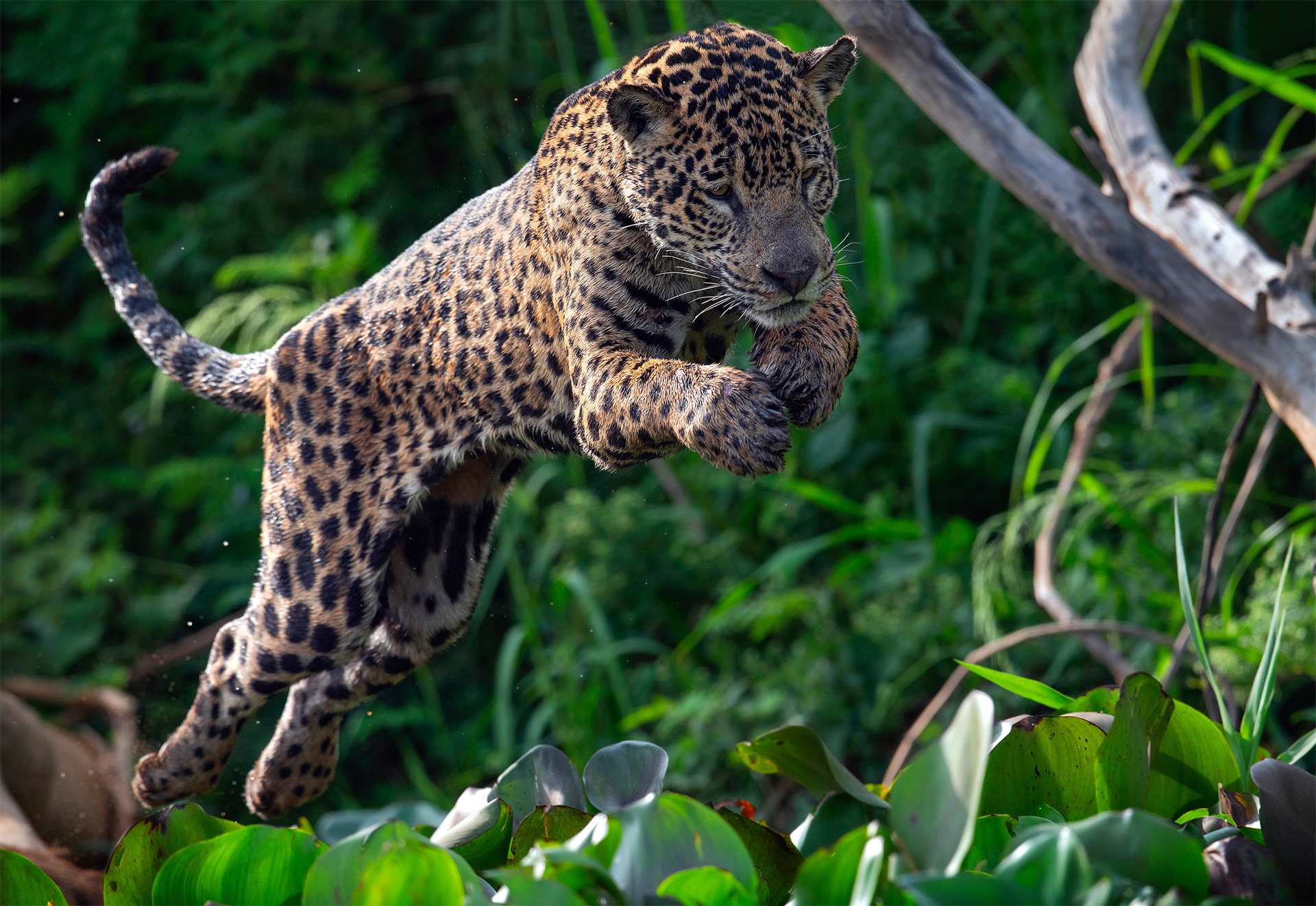
[ad_1]
Greater than 1,200 rivers converge to feed the Pantanal, the world’s largest tropical wetland. That’s 42 million acres of aquatic habitat unfold throughout three international locations: Bolivia, Brazil and Paraguay. Greater than 4,700 plant and animal species reside right here, together with the world’s largest parrot—the blue-and-yellow hyacinth macaw—the sensible blue morpho butterfly, the Victoria big waterlily, and the most important canine in South America—the maned wolf.
It’s additionally within the Pantanal that you just’ll discover the largest of huge cats in Central and South America: the jaguar (Panthera onca).
Jaguars of the Pantanal
Jaguars are categorised globally as Close to Threatened, with populations severely fragmented. Whole numbers are estimated at 173,000, with Brazil residence to round 86,000 people. The planet’s largest focus of jaguars exists within the Pantanal, the place there are considered about 4,000.
Because the third-largest cat on this planet (after lions and tigers), you’d suppose recognizing a jaguar could be a breeze. However right here within the Pantanal, even the most important and most ferocious of predators is dwarfed beneath towering palms and roaring waters.

© Frederico Tavares
Jaguars are solitary mammals that want to be alone, making recognizing one all of the tougher. The one exceptions to this habits are throughout mating and, afterward, in the course of the birthing and rearing of offspring, throughout which the mom fiercely protects one to 4 cubs for 2 years or extra. Typically, a mom jaguar should even defend her litter from the daddy!
My greatest recommendation for capturing greater than a glimpse? Be taught their habits! Listed here are 5 ideas that can assist you spot jaguars within the wild, together with on our Jaguars & Wildlife of Brazil’s Pantanal journey.
1. Look and Hear Intently in Massive Cat Territory
Jaguars outline their territory by clawing bushes and leaving droppings alongside the forest ground. When you see these indicators, preserve your eyes peeled! Males typically mark an space of about 65 sq. miles. Jaguars additionally talk vocally, so pay attention carefully. Males bark and growl, whereas females exert a coughing roar.

> Learn: What’s the Distinction Between Jaguars, Leopards and Black Panthers?
2. Spot the Camouflage
Jaguars use camouflage—additionally known as cryptic coloration—to masks their location, identification and motion. Most jaguars have tawny-colored fur, however some have black-on-black (or melanistic) coloration. In dense rain forest environments, jaguars are likelier to be all black, permitting them to soften into the shadows.

Most jaguars have coats mottled by quite a few jagged black circles known as rosettes. Leopards have an analogous look; nevertheless, their markings lack the dotted middle that jaguars possess. Rosettes are designed to interrupt up the cats’ outlines among the many grasslands and savannas and to obscure the scattering of sunshine and shadows in order that they continue to be hidden from their prey.
3. Keep Alert for Movement as They Stalk Their Prey
The South American Indigenous phrase for jaguar, yaguara, means “animal that kills in a single certain.” That’s a fantastic clue for while you’re on the prowl for jaguars: Preserve an eye fixed out for sudden movement!

Jaguars prey on greater than 85 species, together with monkeys, birds, peccaries, agoutis, deer, tapirs, capybaras and cattle. Their urge for food for underwater fare is most outstanding. Utilizing as much as 1,500 kilos of pressure, jaguars can pierce by way of bones, skulls and hard-shelled reptiles like turtles and tortoises.
Even caimans (order: Crocodilia) are on the menu. Jaguars typically lounge and hunt terrestrial animals from the branches of bushes, however they’re equally adept fishers. These ingenious cats use their tails to lure prey to the water’s floor after which scoop them up with their large paws.

© Jeffrey Whittingham
Nighttime ambushes are most profitable for jaguars, as their imaginative and prescient is healthier fitted to darker situations. They’ve a mirror-like construction known as the tapetum lucidum at the back of their eye, which displays gentle again into their retina. This is identical “eyeshine” you would possibly observe when shining a lightweight towards your cat or canine. This organic benefit practically doubles the jaguar’s imaginative and prescient and permits them to pounce with precision on unsuspecting prey.
Try this video of a jaguar attacking a caiman, captured by a Nat Hab staffer throughout a current Jaguars & Wildlife of Brazil’s Pantanal journey:
© Camie Kirkevold
4. Go to Throughout the Dry Season
Within the Pantanal, the wet season runs from December to March, with greater than 70% of the overall annual rainfall occurring presently. The dry season—July to September—and the middleman seasons—April to June and October to November—are the perfect occasions to go to this space, as temperatures are cooler and wildlife is extra lively. Moreover, prey species congregate on the remaining water sources, drawing jaguars into concentrated areas and rising the chance of witnessing some motion.

© Frederico Tavares
5. Monitor Jaguars With Knowledgeable Guides
Alongside our journey companion, World Wildlife Fund, Nat Hab gives essentially the most in-depth foray into South America’s grandest wildlife realm. Our 11-day Pantanal itinerary (capped at simply 11 company) ensures unique entry to jaguar habitat, with a number of alternatives to see these magnificent cats within the wild.

© Cassiano (Zapa) Zaparoli
Nat Hab’s Expedition Leaders common 10 years of expertise, with further coaching and assets from WWF scientists. We’re additionally joined by native guides at every lodge who’re resident consultants of their area’s wildlife.
Fellow traveler Sheri Dollin displays on her Jaguars & Wildlife of Brazil’s Pantanal journey with the next phrases:
“Brazil has at all times been a type of locations I needed to go to, however I questioned what there was to see when it comes to wildlife. Once I was on a Galapagos expedition with Nat Hab, our pictures information was Zapa. He’s from Brazil and enthusiastically instructed us that Brazil is a superb place for wildlife, so I booked a visit with him because the Expedition Chief. It was completely price it!
Essentially the most memorable second was experiencing the elusive jaguar. I used to be overjoyed to have the ability to witness their each day lives with out impacting them with our presence. We noticed eight totally different jaguars within the three days we had been on the river. This expertise gave me hope that, if we work at it, people can reside and thrive with nature and wildlife with out destroying it.”
Meet Expedition Chief Zapa in our brief movie, Zapa & the Jaguar:
[ad_2]